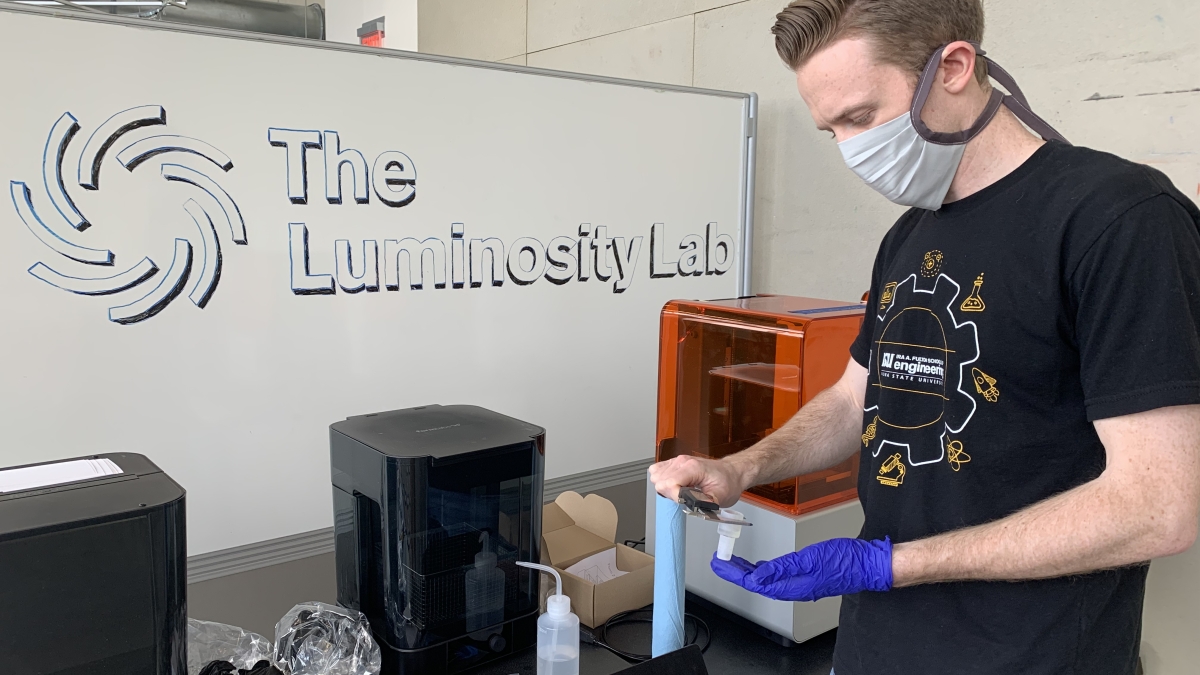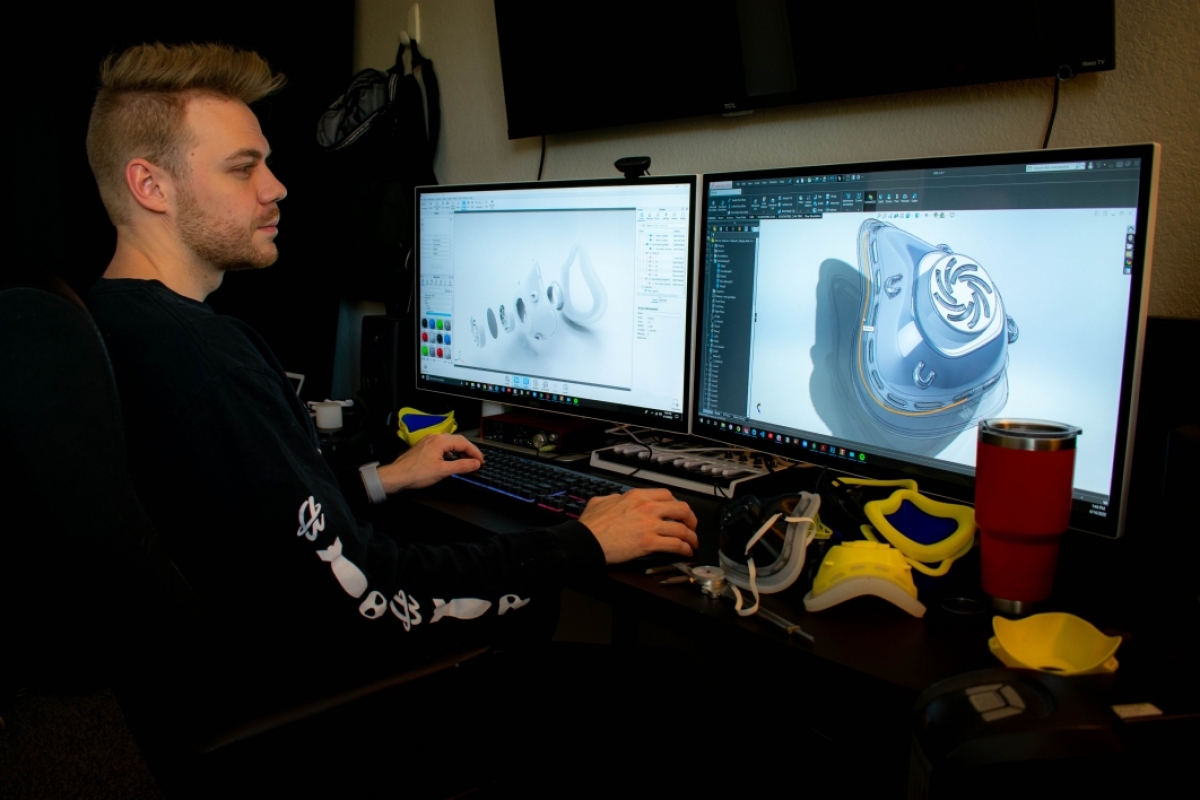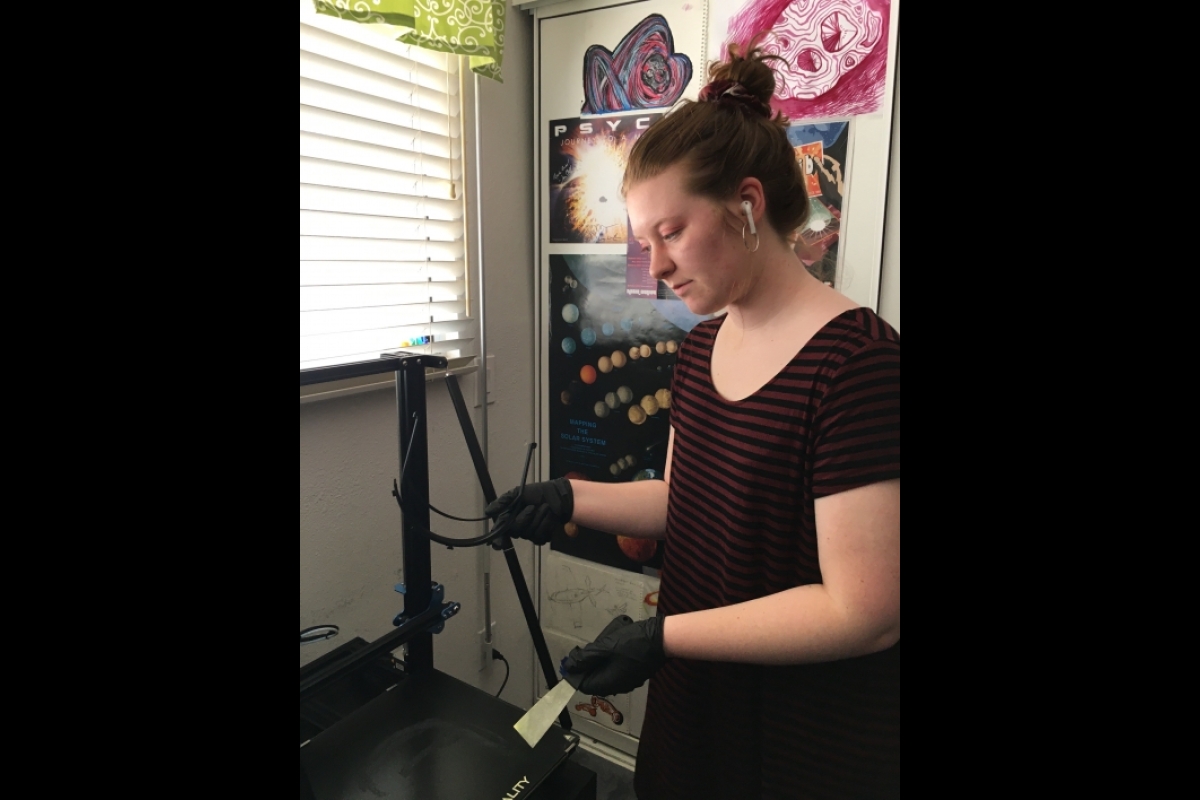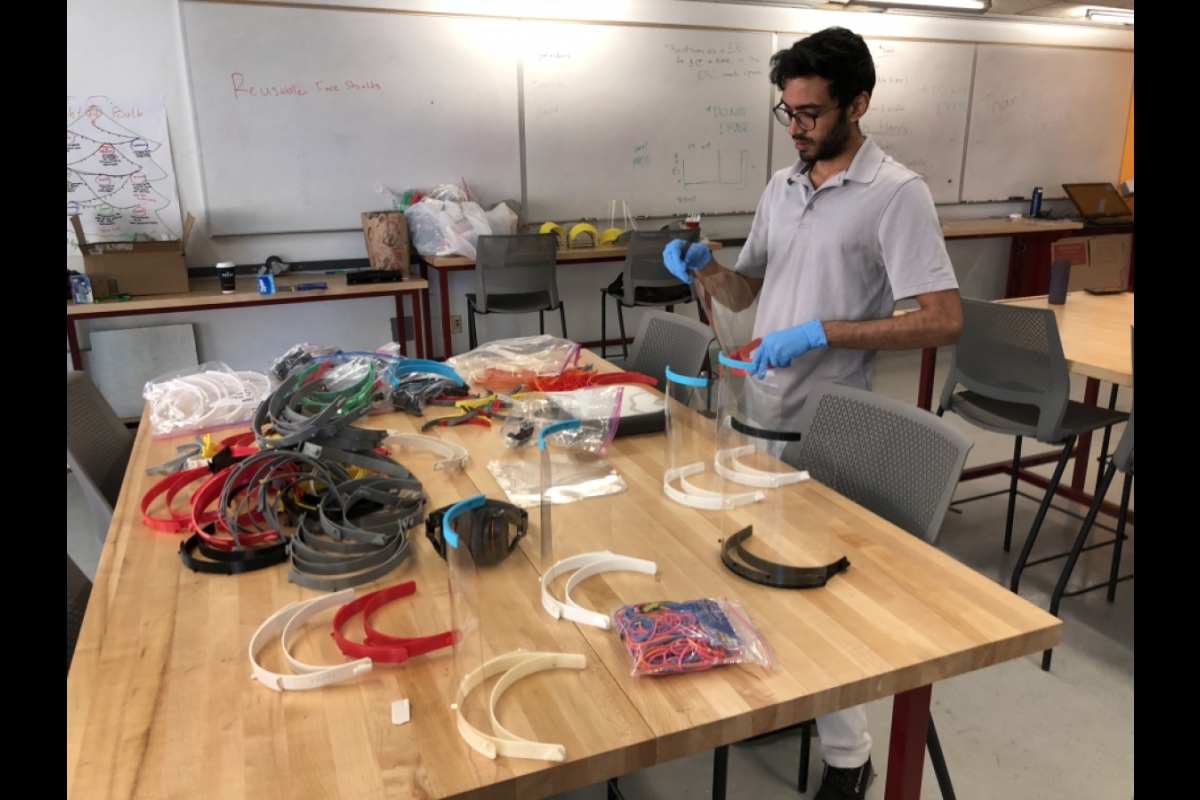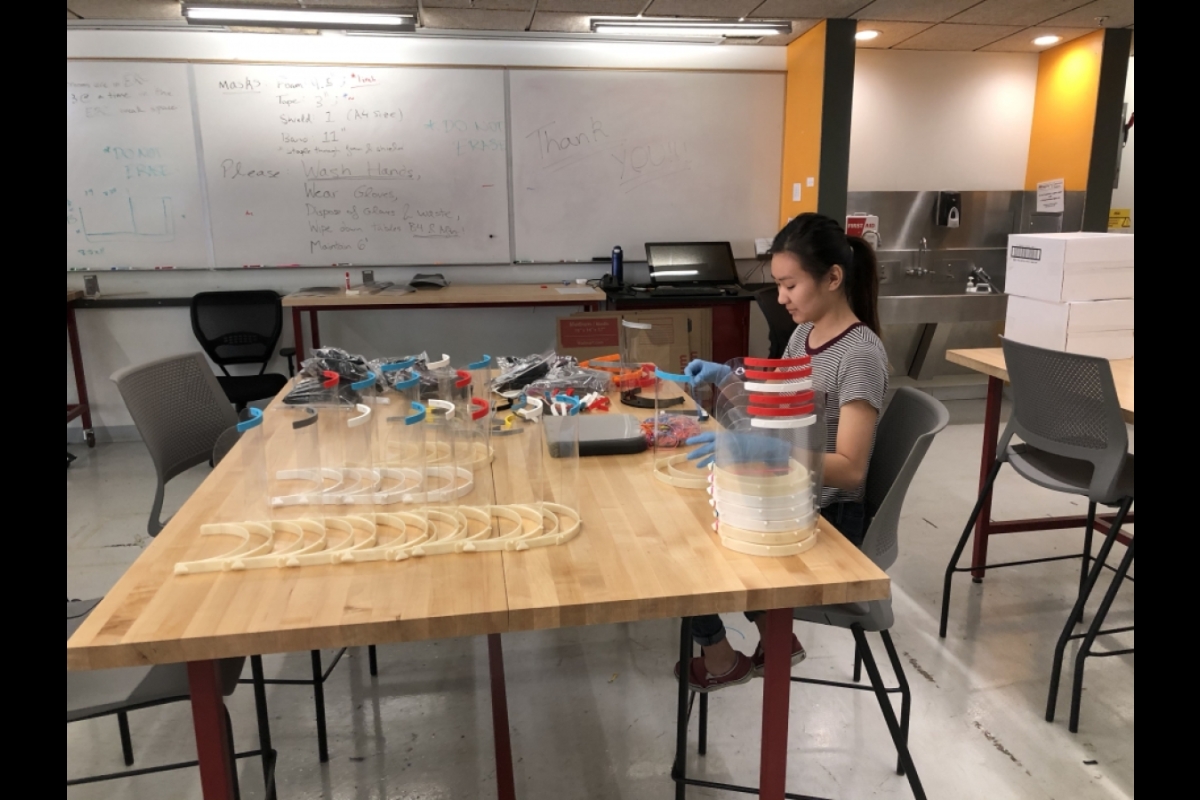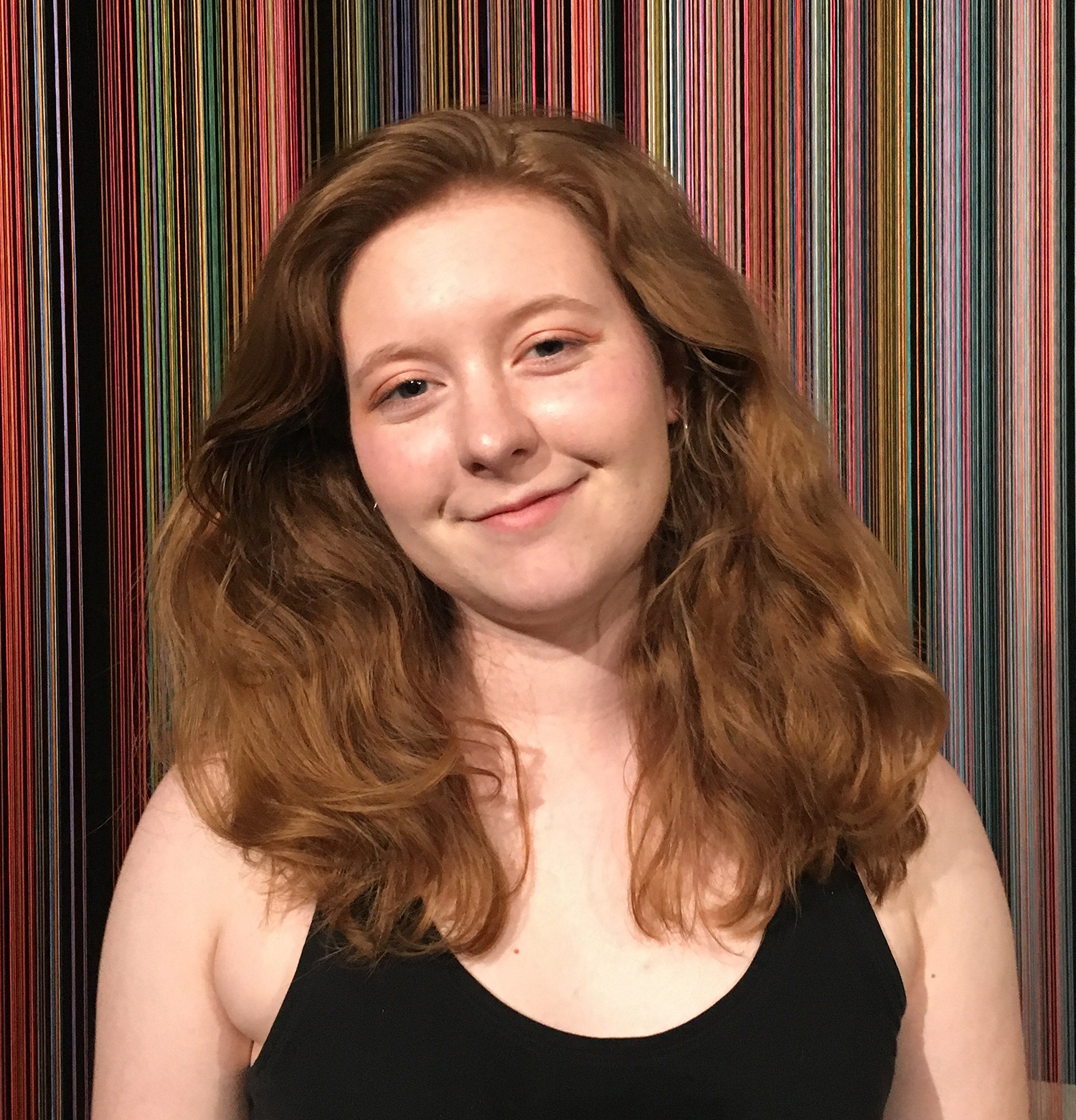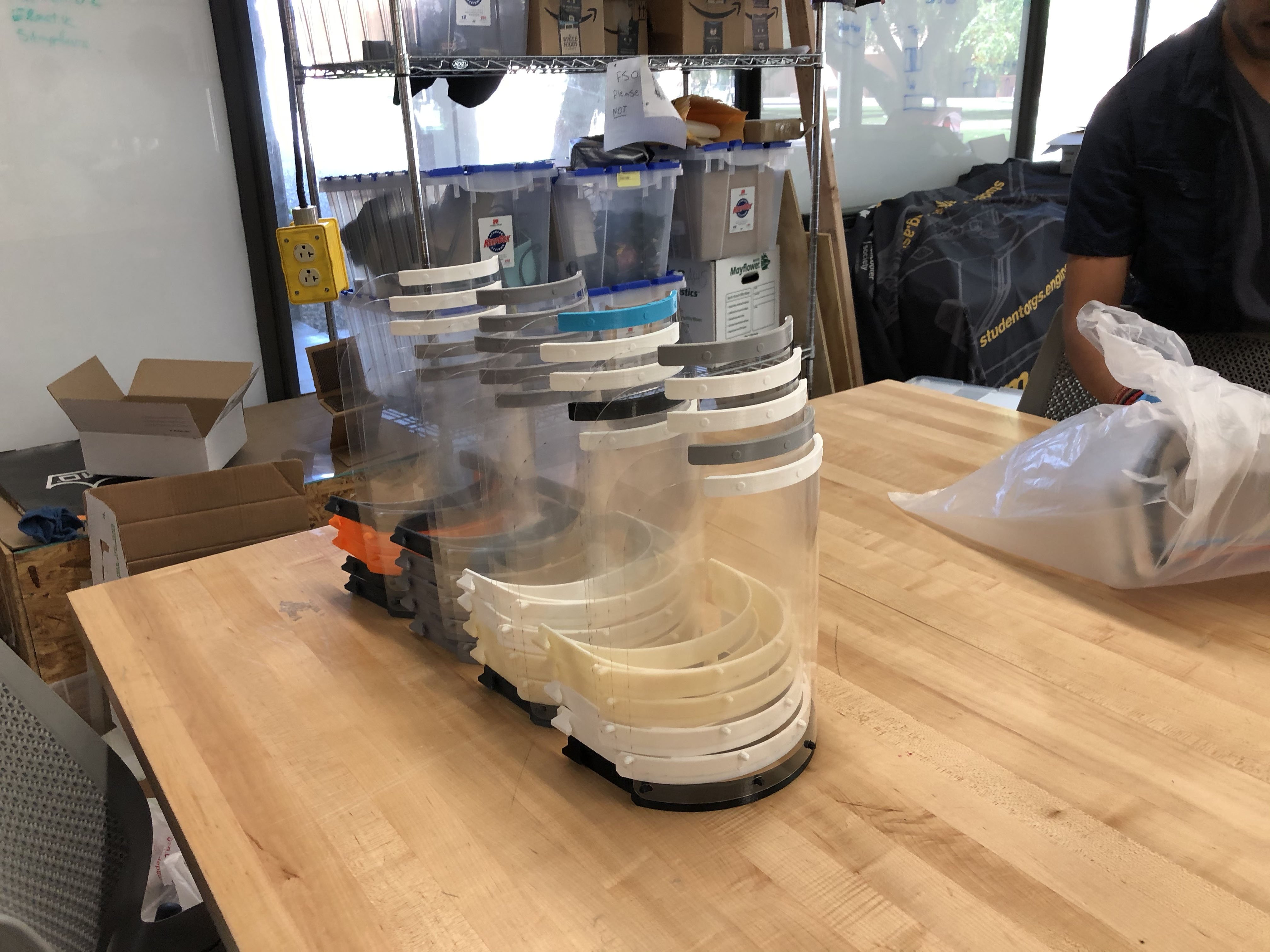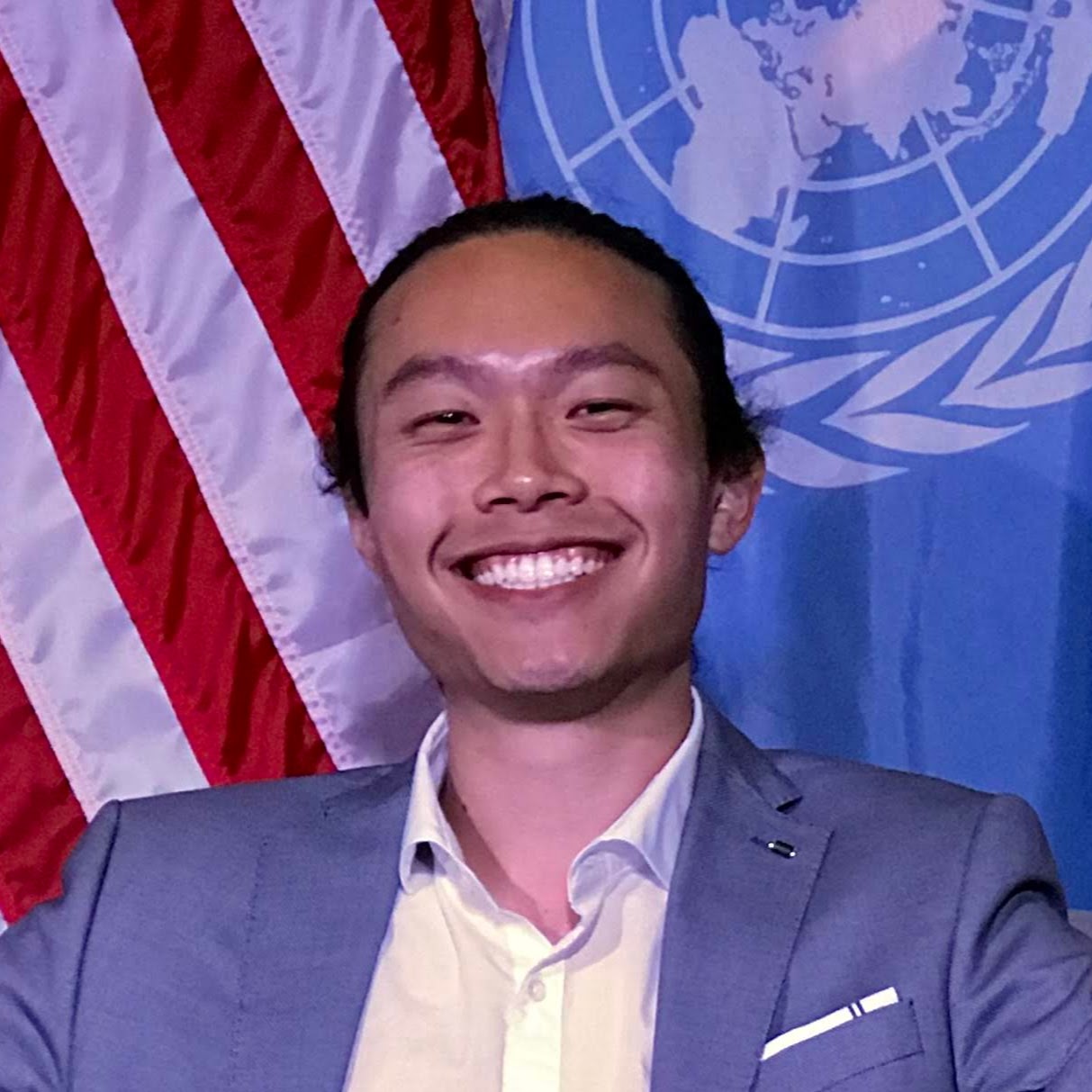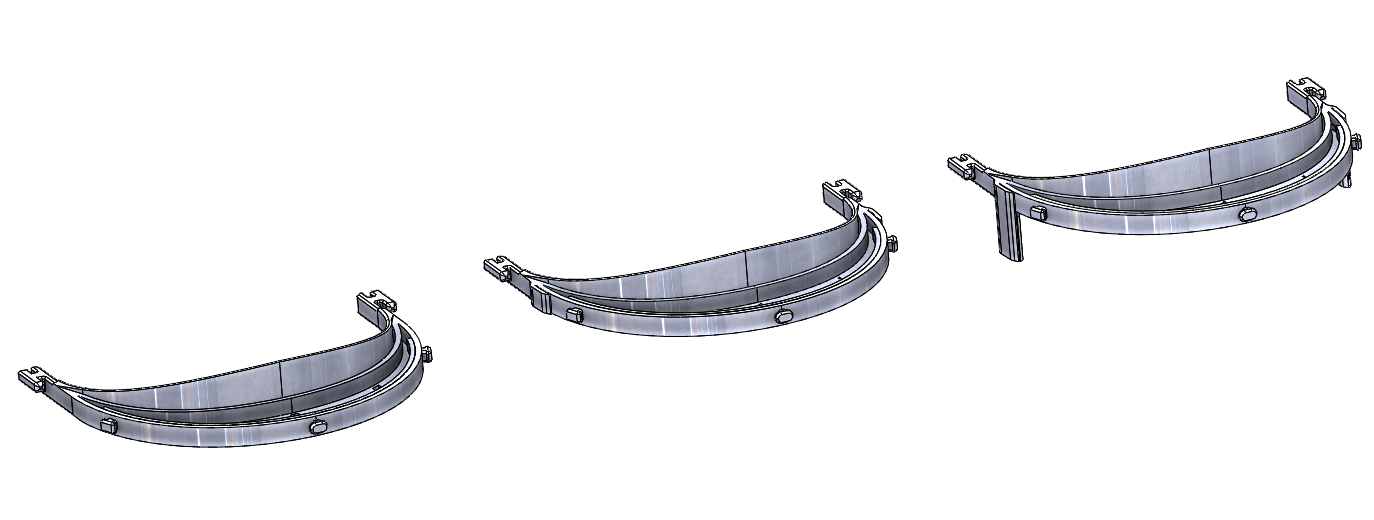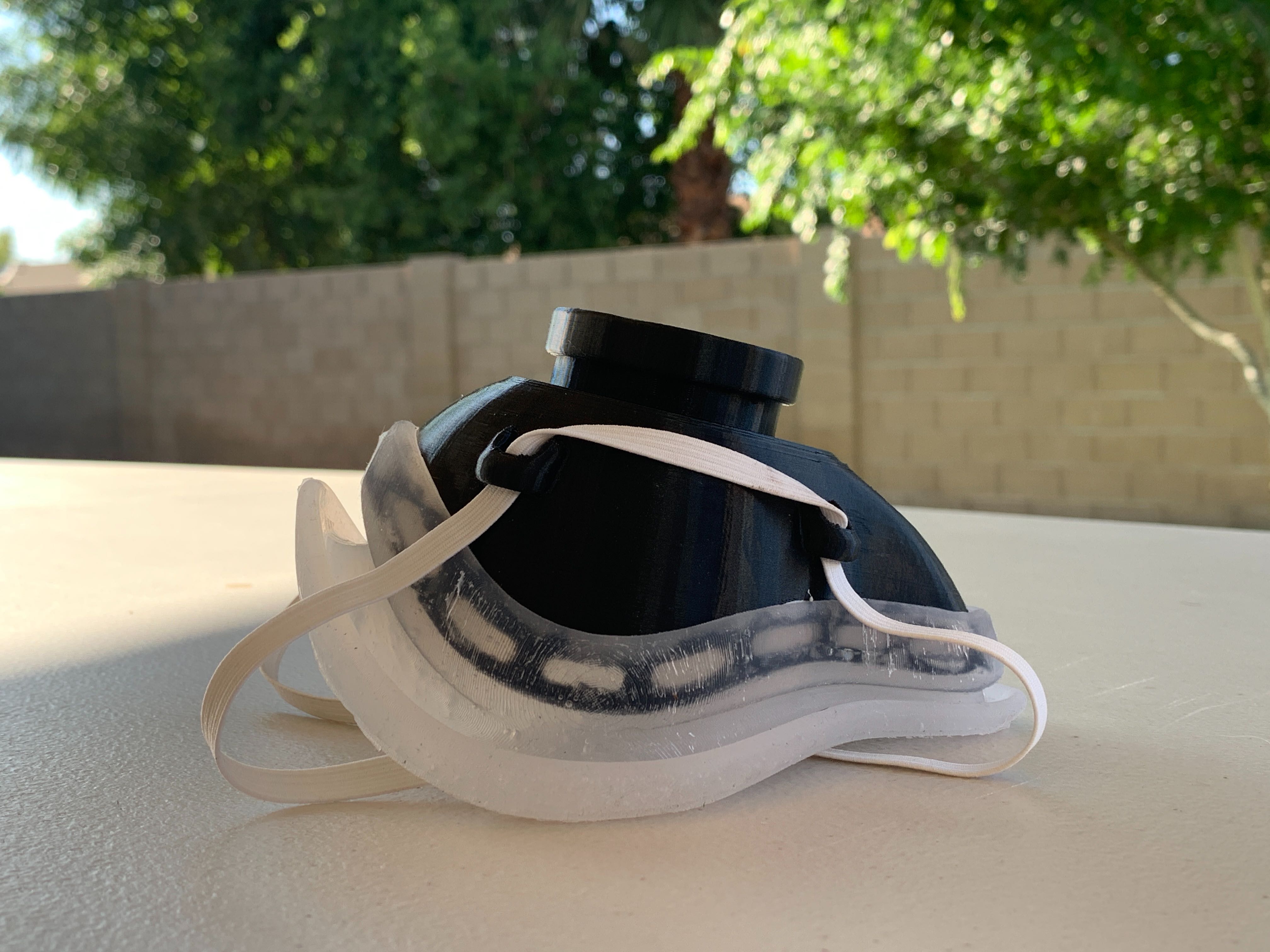Editor’s note: This story is being highlighted in ASU Now’s year in review. Read more top stories from 2020.
Arizona State University has responded to the coronavirus crisis by ramping up a massive initiative to design, produce and distribute critically needed personal protective equipment and other medical supplies.
Not only is ASU continuously fabricating gear to protect health care workers, it’s also leveraging its size and speed to activate the entire community to fulfill the need.
This week, ASU unveiled a new web site called the PPE Response Network that links university and community resources such as 3D printers and sewing equipment to hospitals that need face shields, medical gowns and nasal swabs, and then tracks the lifesaving equipment from creation until it’s being used to help patients.
“Our goal here is to build a cohesive tool that Arizona’s community can use around the rapid development of personal protective equipment,” said Mark Naufel, executive director of ASU’s Luminosity Lab, which is leading the effort.
Already the network has worked with a number of organizations — Banner Health, Equality Health, Dignity Health, HonorHealth and Arizona Academy of Family Physicians, among others — to get their equipment needs registered and underway. The team is working hard to reach and connect health care providers of all sizes, from small provider groups to larger health care systems.
The pperesponsenetwork.asu.edu site works this way:
• Medical providers in Arizona will register on the site, be verified by ASU as legitimate and then list what equipment they need, how much and when. For example, a large medical center might need 3,000 face shields. Providers can be hospitals, clinics, nursing homes or other entities, such as a Native American community.
• Volunteer producers register on the site, listing what equipment they have, such as 3D printers or laser cutters. They see what items are needed and then pledge to create a certain amount. For example, one person with a 3D printer might promise to produce 10 face shields in a week. Producers can be ASU labs, small businesses, nonprofits or individuals in the community. Organizations that have the means and equipment to sterilize PPE can also register as processors.
• Then, one of two things happens. If the provider has the ability to sterilize items, such as at a large hospital, the gear is shipped directly there. If not, the items are shipped to a processor to be sterilized and then on to the provider.
• Once the items are at the medical provider, staff there verifies each item and indicates on the site that the items are received, sterilized and in use.
The site will offer items whose designs are validated as effective: disposable face shields, reusable face shields, nasal swabs and medical gowns. The team is also working on a prototype of a 3D-printable N95 face mask.
(There's a bit of an Easter egg for medical folks in the PPE Response Network name — its acronym is PRN, an abbreviation doctors use when prescribing treatment. PRN, from the Latin “pro re nata,” means “as needed” or “as the situation arises.” It's the guiding principle of the website — producing equipment as needed and requested.)
The PPE Response Network site was designed and launched within a few weeks by students, staff and faculty as part of an initiative that has worked at astonishing speed to address the crisis. Besides the site, hundreds of remotely working people in the ASU community have produced thousands of printed face shields that are already being used by ASU Health Services and medical facilities in the Valley.
ASU faculty and students also are quickly working on designing new devices, including two new kinds of sterilization systems that use gas instead of heat.
The personal protective equipment initiative is in addition to other ASU work on fighting the crisis, including COVID-19 testing for health care providers, first responders and those maintaining critical infrastructure; and creating a clinically approved and certified COVID-19 testing lab and a COVID-19 swab test kit production facility.
“I’m incredibly proud of the way our Luminosity students have stepped up to this global grand challenge — with admirable speed — to develop innovative ways of addressing pandemic-related needs, not just for our state, but to be shared throughout the nation,” said Sethuraman Panchanathan, executive vice president of Knowledge Enterprise and chief research and innovation officer at ASU.
“They were able to immediately identify and prioritize needs and rapidly define parameters for design, testing, delivery and implementation. With outstanding support from the team’s faculty leadership, they have risen to the occasion with their contributions, all of which have the potential to have a critical degree of societal impact.”
ASU’s Luminosity Lab is uniquely positioned for this response as a student-led interdisciplinary research unit that works on improving areas including health care and education. The team is already familiar with using a flexible design process that emphasizes quality assurance. Other units involved in the PPE Response Network include the School of Art; the School of Arts, Media and Engineering; the Polytechnic School; the School for Engineering of Matter, Transport and Energy; and the Biodesign Institute, among many others.
ASU sophomore Nikhil Dave.
Students have been a crucial part of the effort at every step of the way, designing prototypes, validating models, coordinating production, researching liability law and doing other important work on the project — sometimes up to five or six hours a day, despite carrying full course loads.
“It’s really empowering that the school believes in us and knows that students can have an impact,” said Nikhil Dave, a sophomore who works in the Luminosity Lab.
“I’m excited to show that students have an ability to be creative and think outside the box.”
A fast start
As the crisis heightened in early March, the project was launched during spring break as a Google doc, according to Tyler Smith, associate director of the Luminosity Lab.
“We basically started building this effort out and pulling in all these entities within the university — everyone with a 3D printer or rapid-manufacturing equipment,” he said.
“Then we started to put together all the pieces of the puzzle,” said Smith, who worked with Michael Dalrymple, director of University Sustainability Practices, and Dan Collins, a professor in the School of Art and the founding co-director of the PRISM lab, an interdisciplinary 3D modeling and rapid prototyping facility.
They organized the Luminosity Lab’s student workers into four teams, each led by a student.
“It’s surreal how exponentially it started,” said Julia Greteman, a first-year student majoring in materials science and engineering who works in the Luminosity Lab. She leads the production team.
ASU student Julia Greteman.
“The lab basically pivoted 80% of its manpower within the first week.”
The project quickly widened from relying on the lab’s own printers, which were sent home with the students, to including as many devices at possible at ASU and beyond — about 150 total so far.
“I was really interested in the nitty-gritty of what it takes to delegate all these print jobs,” she said.
Three-dimensional printing is uniquely suited to the requirements of a pandemic, Smith said.
“You’re able to do ‘lights-out’ manufacturing, meaning it does everything by itself without any human interaction until you’re ready to take the material,” he said.
One person can fill the printer with plastic filament, walk away and come back several hours later to retrieve the completed item.
Greteman’s production team is fine-tuning the process.
“When printing, we have the engineer’s toolbox as a way to tweak the process to decrease the time or increase the quality,” she said. “I’m doing a lot of troubleshooting, like, ‘Did I slice this wrong and will the printer freak out?’
“The first face shield design was advertised to take 2½ hours to print, but in reality it took 3½ hours, so we’re trying to get that down.”
Once the production team perfects the digital file that contains the print model, she sends it to the other printers, all of whom must comply with strict handling procedures.
“Contamination is a huge issue, and we have to treat this as though we have the virus, with face shields and gloves and by putting everything into field bags,” she said.
She’s also working to source materials because plastic has become in high demand.
“We walked into a professional plastics distributor, and they said, ‘Don’t even ask us,’ ” she said. Large home-improvement stores stock lower-quality plastic.
“We’re getting creative in trying to figure out where we can find things, so we’re searching for alternatives like binder dividers that are clear enough to be used for a face shield.”
Thanks to a rapid response from students, faculty and staff at ASU, thousands of pieces of protective gear have already been distributed to Arizona health care providers. Photo courtesy the Luminosity Lab
How do they know if the devices are “valid”? The design, prototyping and testing team tries to break them.
“We have an intubation box design, and one of the designers was trying to break it with a hammer, similar to drop testing and wear and tear,” said Clint Ewell, who leads the team.
“We have these products and we think they work, but we want to provide health care facilities with as much information as they need to make informed decisions about using these nontraditionally fabricated models of PPE,” said Ewell, a graduate student in robotics engineering.
The design team works with health care providers on prototypes for items including respirator parts.
“It’s a lot of Zoom meetings and the equipment and resources are decentralized, so everyone is working out of their garages with the tools available and sharing the results,” he said.
Dave, who leads the sterilization team, was one of the first students on the project, starting with an 8 a.m. call just as spring break ended.
“We got started that day, and it’s been amazing to see the progress,” said Dave, a sophomore majoring in neuroscience and innovation in society. His team works with collaborators around the ASU campus.
“One of the major shortages is N95 masks, so we’re finalizing two systems that can sterilize those for reuse,” he said. “One uses vaporized hydrogen peroxide, and one uses ozone gas.”
The systems would be cheap and scalable and could replace the autoclave, the traditional system of sterilizing with heat, which damages some kinds of plastic.
ASU junior Jeremy Liu.
Jeremy Liu leads the software and supply-chain team that’s developing the PPE Response Network website.
“The individual hobbyists are the crux of the web application,” said Liu, a senior majoring in math. “People around the country are thinking, ‘How can I contribute besides wearing a mask and staying indoors?’
“From the get-go, the idea was to engage everyone who wants to and has the capacity to do so.”
Even though the site was launched very quickly, the team tried to make the user experience as informative as possible. For example, the site will send an automated email to producers whose batches have a 30% or higher failure rate, Naufel said.
“It gives insight back to the contributor that they’re doing something wrong,” he said.
The platform also allows the producers to choose any provider they want.
“We don’t want to bias the system,” Naufel said. “If you’re a producer and your mom works at Mayo (Clinic), you’re welcome to give to Mayo.”
“Some businesses might have existing relationships with hospitals and have a compensation agreement outside of the app, and that’s fine. This doesn’t facilitate compensation.”
“The most urgent needs are N95 masks and gowns. Information on method of sterilization has also been important,” said Susan Pepin, managing director of health and clinical partnerships with ASU Knowledge Enterprise. “The shared crisis of the SARS CoV-2 pandemic showcases why students come to ASU: to provide needed solutions with innovation and passion. I continue to learn from the students and am even more impressed with the rapidity and rigor of their efforts.”
Creating a better face shield
ASU faculty are also working to improve the traditional designs of personal protective equipment.
Collins, who cut his spring break trip short to return to ASU, is working on several projects at once, including redesigning the face shields that doctors and nurses wear over their N95 masks.
“From the beginning, we understood there were two parallel tracks on the face shields — the disposable and the reusable,” he said.
“We had a team of volunteers who over the course of three or four days made 1,000 disposable face shields for ASU Health Services and the internal needs of the Biodesign Institute,” he said.
They made the masks from plastic binder covers, strips of foam and pieces of elastic that are stapled together. But because they can’t be dismantled to be cleaned, they must be thrown away.
“The challenge was to make a reusable that could pass muster with the health care providers,” he said.
An ASU team devised several new prototypes of face shields to improve upon the current design. Image courtesy The Luminosity Lab
The most common design has been in use for years, but Collins and a team of about 30 people at ASU spent days reworking the model to make it more protective. By adding a “cowling,” the new version helps to prevent aerosol or splatter from hitting the face over the top of the shield. The design is made from polycarbonate, which can withstand heat sterilization. But it requires a very sophisticated printer to produce, illuminating a weakness with the DIY network.
“We can harness a distributed community of DIY makerspaces and deploy something quickly. There is a lot of capacity,” he said. “But you’re talking about something that is a long-term solution that can rival professional products.”
Collins also is working with students to invent a new sizing device that will help health care workers more quickly find N95 masks that fit. Currently, workers throw away ill-fitting masks.
“Two weeks ago, we made a high-resolution, three-dimensional scan of a doctor’s face as a test,” he said.
This N95 prototype is made of 3D-printed material and molded silicone. Photo courtesy The Luminosity Lab
“We came up with a sizing protocol, which is a contoured plastic ring in the shape of a profile of a mask. They can put the ring against their face and instantly know their size,” he said.
Nasal swabs are also in short supply. ASU is working with a local company that’s certified by the federal government to design a swab that can be printed in one piece with filaments at the tip that are so fine that they are effective when used for testing inside the nose.
“The students will start producing these and having them go through the sterilization process,” Collins said.
“That’s one that holds a lot of promise.”
A higher calling
The people involved in the PPE Response Network project say they feel an emotional connection to their work.
“Before I got onto this project at the end of spring break, I was feeling pretty bleak,” said Greteman, who saw friends’ graduations canceled and was worried about her aunt, a health care worker.
“Being able to help has put my anxiety a little bit more at ease, and I feel like I’m contributing rather than being passive.”
Dave has worked in the Luminosity Lab for two years and worked in the Biodesign Institute as a high school student.
“I was born in Arizona and I’ve been engaged with ASU since I was 14 years old, so the emotional component for me is that I want to impact the university and the state and help as much as possible,” he said.
Naufel has seen the students’ passion when they report every day on their teams’ progress.
“The students feel like this is a higher calling or a mission,” he said.
“I’ve been inspired to tears multiple times.”
Top photo: Graduate research assistant Clinton Ewell works in Luminosity’s facilities at the Polytechnic campus, which stores their resin 3D printers. This type of printer is currently being used to experiment with test swabs and ventilator splitters for R&D purposes. Photo courtesy Clinton Ewell.
More Health and medicine

New initiative aims to make nursing degrees more accessible
Isabella Koklys is graduating in December, so she won’t be one of the students using the Edson College of Nursing and Health Innovation's mobile simulation unit that was launched Wednesday at Arizona…

Reducing waste in medical settings
Health care saves lives, but at what cost? Current health care practices might be creating a large carbon footprint, according to ASU Online student Dr. Michele Domico, who says a healthier…

ASU offers bilingual counseling to Spanish speakers
Arizona is one of the five states in the nation with the highest percentage of Hispanic residents, according to the U.S. Department of Health and Human Services Office of Minority Health, and …


